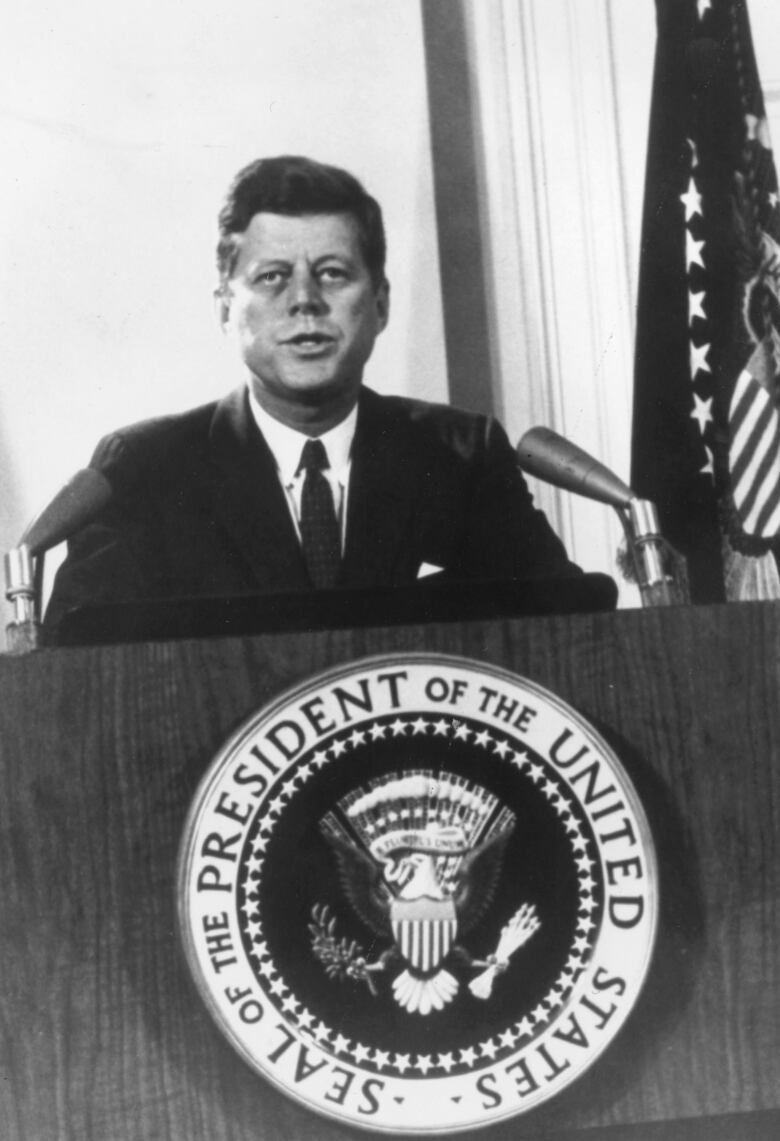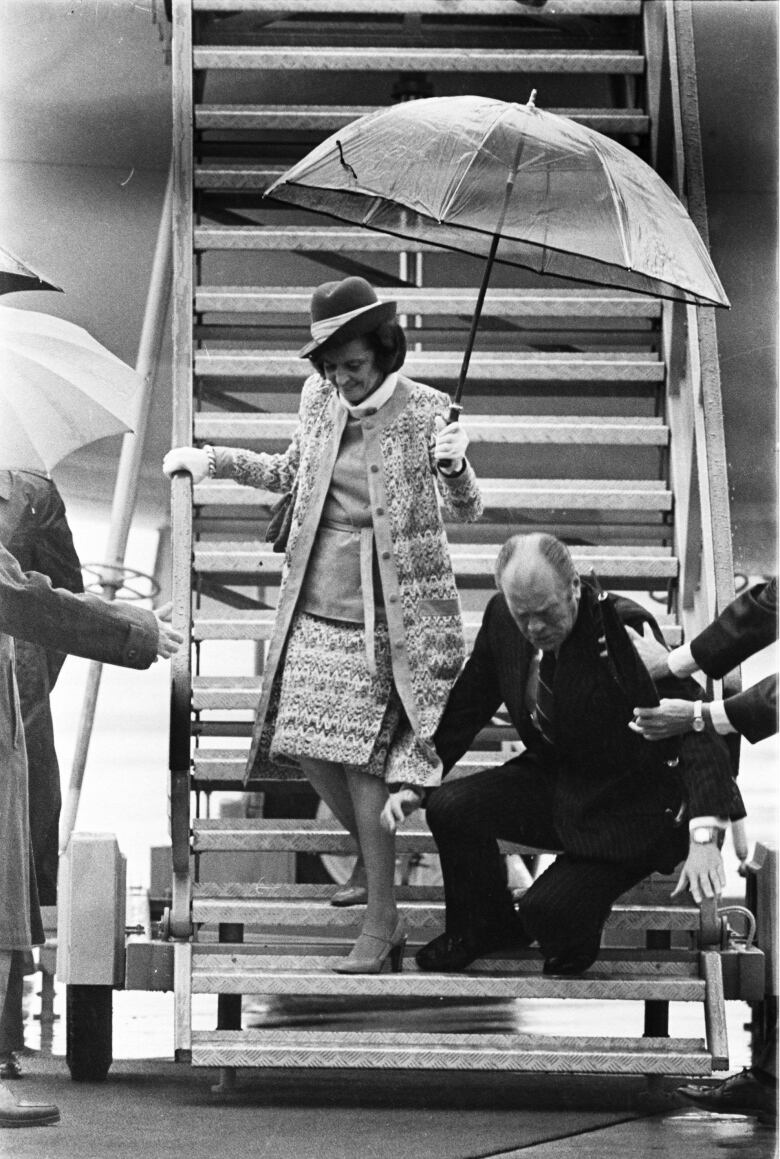Dunce caps and wiretaps: A history of fractious relationships between presidents, press
Former U.S. president Richard Nixon deemed the press 'the enemy'

"Fake news," "failing" and "unwatchable" these are the adjectives U.S. President Donald Trump has used to describe news organizations including the New York Times, Washington Post and CNN, in what he has deemed a "running war" with the media.
On Friday, reporters from CNN, the New York Times, Los Angeles Times and Politico were not permitted to attend a press briefing in the office of White House press secretary Sean Spicer. The Associated Press and Time magazine boycotted the briefing, spurring concerns about access to the president and freedom of the press.
On Feb. 17, Trump launched one of his harshest attacks on the media, saying on Twitter:
"The FAKE NEWS media (failing New York Times, NBC News, ABC, CBS, CNN) is not my enemy, it is the enemy of the American People!"
The president's remark spurred sharp criticism as some observers made the case that journalists ought to be adversarial. Carl Bernstein, who along with Bob Woodward uncovered the Watergate scandal that brought about the downfall of president Richard Nixon, criticized Trump.
"The most dangerous enemy of the people is presidential lying always. Attacks on press by @realDonaldTrump more treacherous than Nixon's," Bernstein tweeted.
Trump is hardly the first president to have tense ties with the media. Thomas Jefferson was a great proponent of freedom of the press and yet still expressed frustration, suggesting that newspapers "present for the most part only a caricature of disaffected minds."
By comparison, Teddy Roosevelt enjoyed the exchanges he had with reporters and held press conferences twice a week and Woodrow Wilson granted unprecedented access to the White House. Here is a look at the sometimes fraught relationship between presidents and the press.

Theodore Roosevelt opens doors
Theodore Roosevelt was the first president to designate a press room for reporters in the White House. The president enjoyed an informal relationship with journalists, and invited them along while he was shaved by the White House barber.

'Wilson Wins Newspapermen'
Woodrow Wilson often met with reporters, one on one at the White House. When a group of journalists by chance showed up on March 15, 1913, he took questions from the group, creating what has become the modern news conference.
"Your numbers force me to make a speech to you en masse instead of chatting with each of you, as I had hoped to do, and thus getting greater pleasure and personal acquaintance out of this meeting," he told the gathering of reporters.
Wilson's impromptu solution won him rave reviews. The New York Times ran a headline about the meeting that read "Wilson Wins Newspapermen" while the Washington Post ran with "Wilson, in friendly chat, says he likes reporters."

Silent Cal's wordless disdain
Calvin Coolidge was nicknamed "Silent Cal" for his quiet manner. He met with reporters frequently, but demanded that questions be submitted in writing.
"To show his disdain for the press, Coolidge on occasion would read a question, and then without answering, crumple it up and throw it away," wrote Marvin Kalb and Frederick W. Mayer, authors of a 1988 report on presidential news conferences.
During his six years in office, Coolidge held more news conferences than any president before or since, according to the Calvin Coolidge Presidential Foundation.

'Put on the dunce cap': FDR
Franklin Roosevelt enjoyed a chummy relationship with the media and held nearly 1,000 news conferences over his four terms. But he was not above trying to put reporters in their place, as was observed during a feisty exchange with Robert Perkins Post, a New York Times reporter, in 1937.
Post asked the president if he would seek a third term in office. Roosevelt shrugged off the question and instead began talking about the weather. When Post persisted, Roosevelt said, "Oh Bob, go put on the dunce cap and stand in the corner." As Post left the room, Roosevelt gave the thumbs down. Journalists criticized Roosevelt, saying he tried to evade questions, according to Jim Hamilton, author of The Writing 69th.
Roosevelt also notably introduced his nationally broadcast radio addresses he called "fireside chats." In these broadcasts, the president took his messages about policy straight to the American public.

Kennedy's TV conferences draw millions
Under John F. Kennedy, news conferences were broadcast live. The telegenic president prepared fastidiously for the exchanges, and ran through rehearsals with his staff. And the president drew audiences. The average audience for all of his broadcast news conferences was 18 million, according to the John F. Kennedy Presidential Library and Museum.
Kennedy in a 1962 interview with NBC said he used news reports as another arm of his administration.
"I think it is invaluable, even though it may cause you it is never pleasant to be reading things that are not agreeable news, but I would say that it is an invaluable arm of the presidency, as a check really on what is going on in the administration, and more things come to my attention that cause me concern or give me information," he said.
But privately, Kennedy also authorized a wiretap on a New York Times national security reporter to find out who was leaking secrets to the media.

Nixon called reporters 'the enemy'
Richard Nixon sparred frequently with the press, convinced that they wouldn't give him a fair chance. In 1962, he accused the media of unfairly covering his gubernatorial bid.
"You won't have Nixon to kick around anymore, because, gentlemen, this is my last press conference."
In fact, it wasn't his last meeting with the media and Nixon came back to later win the presidency in 1969. Nixon had a hard time concealing his disdain for reporters, whom he called "the enemy." Nixon's vice-president, Spiro Agnew, gave a speech in 1969, calling the press a "small and unelected elite." He also suggested news organizations were not producing credible reporting.
"Perhaps the place to start looking for a credibility gap is not in the offices of the government in Washington, but in the studios of the networks in New York."
As the Watergate crisis unravelled his presidency, Nixon refused to hold a news conference for five months.

Gerald Ford's stumble
Gerald Ford's unfortunate slip down the stairs of Air Force One during a 1975 trip to Austria made the front page of the Washington Post. The paper also ran a story that said the president "lost the heel of his shoe and a measure of his dignity."
Ford later described the effect the news coverage had on his presidency in his memoirs.
"From that moment on, every time I stumbled or bumped my head or fell in the snow, reporters zeroed in on that to the exclusion of almost everything else. The news coverage was harmful," he wrote in Time to Heal.













_(720p).jpg)


 OFFICIAL HD MUSIC VIDEO.jpg)
.jpg)



























































































